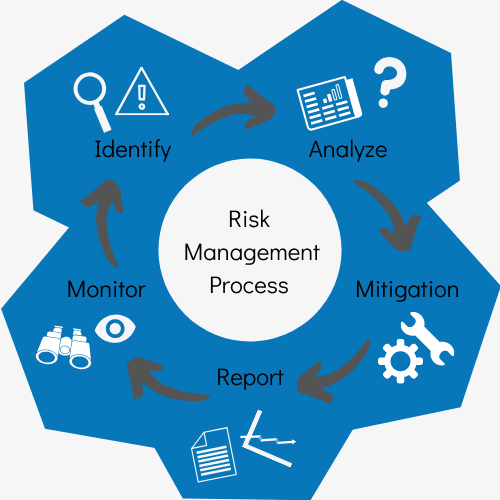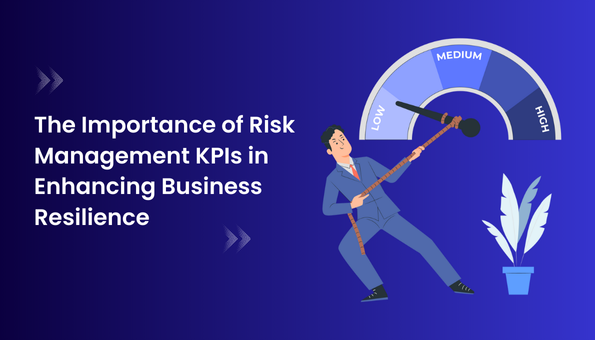The Effect of the Importance of Risk Management on Organizational Governance
The Effect of the Importance of Risk Management on Organizational Governance
Blog Article
Exploring the Significance of Risk Management for Effective Decision-Making Methods
In the intricate world of service, Risk Management emerges as an important aspect in the decision-making procedure. The capacity to determine possible threats and possibilities, and strategize as necessary, can lead to the distinction in between success and failure.
Understanding the Idea of Risk Management
Risk Management, a vital element in decision-making, is usually misconstrued or oversimplified. Risk Management entails self-displined and organized techniques, using information and insightful evaluations. From economic unpredictabilities, lawful responsibilities, tactical Management mistakes, to accidents and natural catastrophes, it resolves different dangers - importance of risk management.
The Duty of Risk Management in Decision-Making Processes
In the world of tactical planning and company operations, Risk Management plays an indispensable role in decision-making procedures. It helps in determining possible hazards and unpredictabilities that might affect the accomplishment of business goals. By mapping these threats, business can create methods to mitigate their influence, making certain service continuity and security. Risk Management hence becomes a vital tool in decision-making, aiding leaders to make enlightened choices based on a comprehensive understanding of the threats entailed. It motivates a positive technique, making it possible for companies to expect and prepare for possible future scenarios. This considerably reduces the likelihood of adverse consequences, advertising a lot more efficient and reliable decision-making techniques. Risk Management serves as a crucial element in the decision-making processes of any type of organization.

Just How Risk Management Boosts Strategic Preparation
In the context of calculated planning, Risk Management plays a crucial role. Launching with the identification of potential risks, it even more includes the execution of Risk reduction measures. The function of Risk Management is dynamic yet not fixed, as it demands consistent monitoring and adjusting of methods.
Determining Potential Threats

Applying Risk Mitigation
Risk mitigation strategies can range from Risk evasion, Risk transfer, to risk reduction. Each method must be tailored to the specific Risk, considering its prospective influence and the organization's Risk tolerance. Reliable Risk reduction calls for a like this deep understanding of the visit the site Risk landscape and the potential impact of each Risk.
Surveillance and Readjusting Techniques
Though Risk mitigation is a crucial step in calculated preparation, constant tracking and modification of these approaches is equally essential. It additionally offers a possibility to review the success of the Risk Management measures, permitting modifications to be made where needed, further enhancing critical planning. Tracking and readjusting Risk Management strategies is an important component for enhancing an organization's resilience and strategic preparation.
Instance Studies: Effective Risk Management and Decision-Making
In the globe of business and financing, successful Risk Management and decision-making frequently offer as the pillars of thriving ventures. These situations highlight the worth of sharp Risk Management in decision-making procedures. These instances emphasize the essential function of Risk Management in tactical decision-making.
Devices and Techniques for Reliable Risk Management
These tools, such as Risk signs up and warm maps, aid in recognizing and analyzing prospective dangers. Risk reaction strategies, an essential part of Risk Management, involve accepting, avoiding, moving, or mitigating risks. With these strategies and devices, decision-makers can navigate the complex landscape of Risk Management, thereby assisting in notified and effective decision-making.
Future Patterns in Risk Management and Decision-Making Approaches
As we discover the substantial landscape of Risk Management, it comes to be noticeable that Continued the methods and tools used today will proceed to advance. Future patterns point towards an enhanced reliance on technology, with expert system and artificial intelligence playing significant duties. These technologies will certainly make it possible for organizations to predict possible threats with greater accuracy and make more educated choices. In addition, there will certainly be an expanding emphasis on resilience, not simply in taking care of threats yet additionally in recuperating from damaging circumstances. The idea of Risk society, where every participant of an organization is mindful and entailed in Risk Management, will certainly acquire much more prominence. These patterns herald a more aggressive and inclusive strategy in the direction of Risk Management and decision-making.
Verdict

Risk Management thus becomes an important tool in decision-making, helping leaders to make enlightened selections based on an extensive understanding of the dangers included. Risk reduction approaches can range from Risk evasion, Risk transfer, to run the risk of reduction (importance of risk management). Effective Risk reduction requires a deep understanding of the Risk landscape and the potential influence of each Risk. Risk action strategies, a crucial element of Risk Management, include approving, staying clear of, transferring, or mitigating threats. The concept of Risk culture, where every participant of an organization is aware and involved in Risk Management, will gain extra importance
Report this page